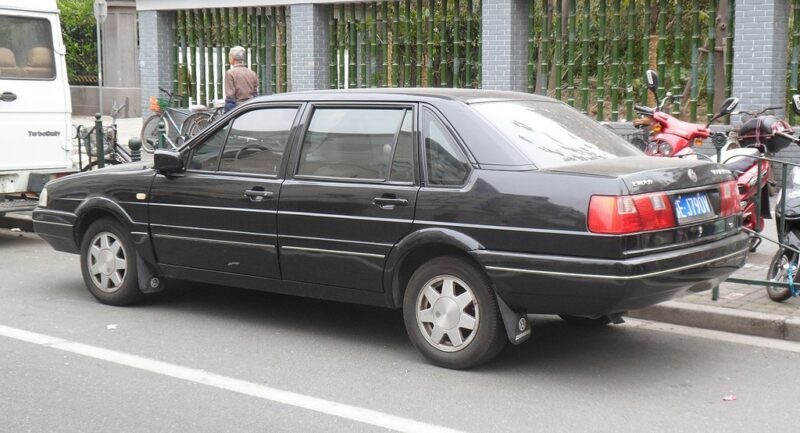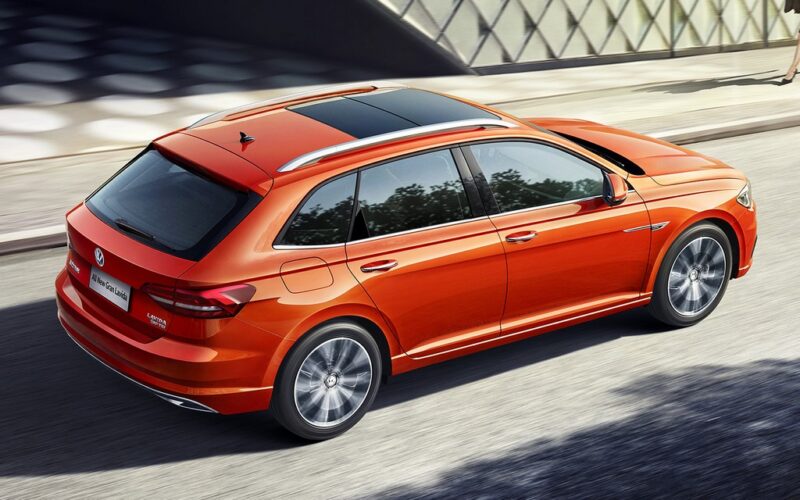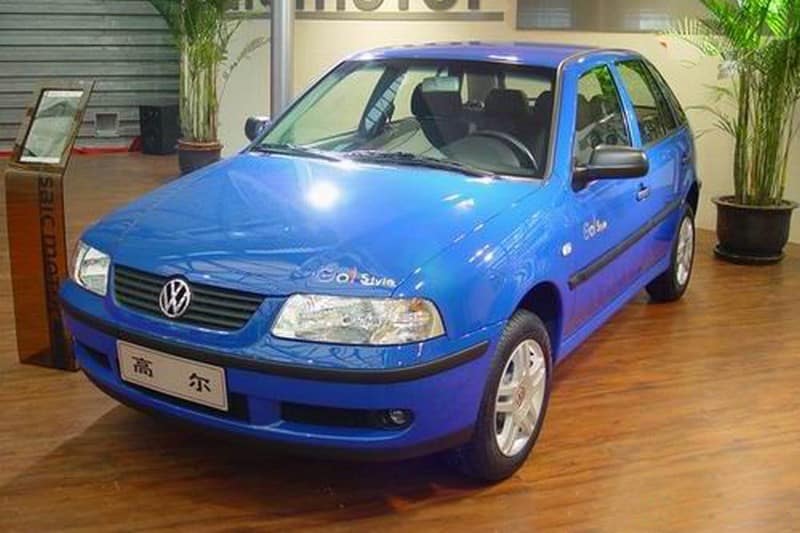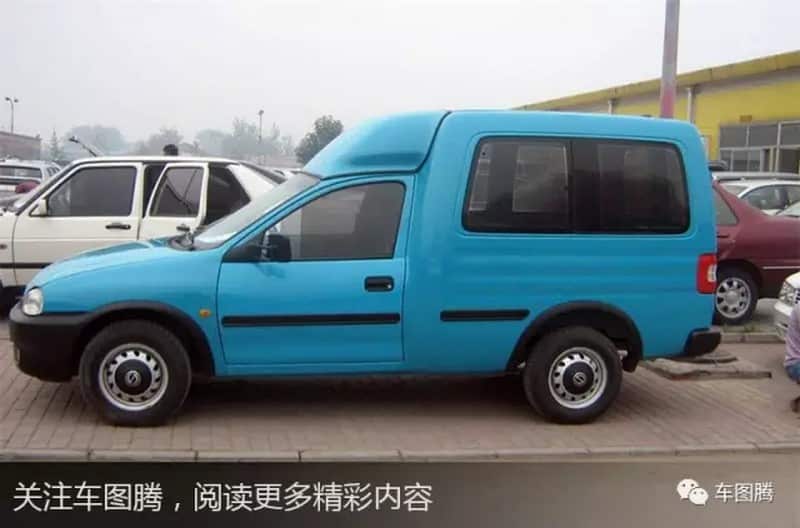The Big Read – SAIC (5/6) – Volkswagen, also China’s people’s car
The name Volkswagen literally means a “car for the people” and the brand achieved this successfully in the West with the Beetle and later the Golf/Rabbit. In China Volkswagen enjoys a similar status, although the model synonymous with the word car itself is the Santana. This car marked the start of modern car production in China.
Born in quality
A story only becomes exciting when the protagonist is challenged, has to overcome unexpected setbacks or has to make difficult decisions in a short time under pressure. The history of SAIC-VW is one of steady, continuous growth without significant difficulties. So your writer has a difficult task to turn this into an interesting story.
Not that the development of China’s first passenger car joint venture went smoothly. For example, there is a story from the early days, in which German managers reject a set of sheet metal parts because of dents and scratches and deposit them in the scrap iron bin. However, the Chinese workers take the parts from the bin and use rubber mallets and polishing cloths to make the items usable. When the managers discover this, they take up the hammer themselves. They beat the parts to pieces and throw them back into the bin, leaving behind the Chinese workers offended and confused.
This story illustrates the initial cultural differences between the Germans and the Chinese. The Chinese are used to not wasting anything and to working with the stuff they receive, no matter how poor the quality is. The Germans stand for rigid quality controls and efficiency. However, the differences of opinion are overcome and the Chinese quickly recognise the importance of consistent quality.

However, the Chinese workers are ingenious and skilled. When in 1982, ahead of the formal formation of the partnership, Volkswagen sends a shipment of “Complete knocked-down kits” to Shanghai for test assembly, SAIC has little to work with. They put together a rudimentary production line with mobile cranes and flat cars and within a few weeks the first complete Volkswagens roll off this “line”. The Germans are satisfied and in 1984 they sign for the foundation of Shanghai-VW and a year later the real production starts. This time in a newly built factory with a modern production line.
Ding Lei, founder of Human Horizons, but previous to that long-time quality control manager at SAIC-VW, once said he was ‘born in quality’. It’s exactly that focus on build quality that sets the early SAIC-VW production apart from its Chinese counterparts. The cars are vastly better engineered and built than the competition and give Volkswagen a leading advantage when the market starts to grow rapidly.
Three decades of Santana
The model that the Chinese chose as their first Volkswagen is the Santana. Over in Europe this is a long forgotten model, the sedan version of the second generation Passat, which back then was only available as a liftback or station wagon. In China, however, the Santana is almost equivalent to “car” and has an almost comparable status to the Beetle in the Western world. It is the first modern car to be built in China and marks the start of the tremendous advance of the Chinese car industry.
Initially, the Santanas are made in Germany and sent to China as a kit, but the choice for VW as a joint venture partner is based on a willingness to localize production. And so SAIC-VW quickly starts setting up a local parts supply. SAIC has a large network of component manufacturers, which are engaged in the localization effort. On top of that it sets up many new partnerships with renowned international producers, so the local content grows steadily and reaches more than 80% by 1990. This is how SAIC-VW lays the foundation for its successful future.

The original VW Santana 
VW Santana 2000 
VW Santana 2000 
VW Santana 3000 
A Santana 3000 in its natural habitat as taxi 
VW Santana Vista 
VW Santana mk.2 
VW Gran Santana mk.2
The Santana remains in production for an eternity. In Europe the model disappears in 1995, but certainly not in China. That year SAIC-VW introduces a self-developed update, with some help from the Brazilian VW factory, which is called Santana 2000. In 2004 this car evolves into the Santana 3000 and in 2008 into Santana Vista. All the while, the original model is still sold as Santana Classic. In 2012, the curtain finally falls for public sale, but the Santana Classic will be made as a taxi until 2018!
China is the only country in the world that still has a Santana in the price lists. This second generation launched in 2012 largely shares its technology with the Skoda Rapid and represents SAIC-VW in the space of low-cost compact sedans.
Diversification of the product portfolio
The Santana reigned supreme within SAIC-VW for nearly 15 years. At the end of the 1990s, the Chinese market began to explode and obviously the single model policy couldn’t sustain the growth of the company. The European Passat is added to the range in 1999, followed in 2003 by the Gol (low-budget South American hatchback with longitudinal engine), Polo and the Touran compact MPV. Success does not follow immediately, but when VW adds more variants aimed at the Chinese taste, such as the Cross Polo, sales go in the right direction.
In 2005, SAIC-VW announces the Skoda brand will be added to the joint venture. However, the first Skoda to be manufactured in China, the first generation Skoda Superb, isn’t marketed under the Czech brand. It receives a slight restyling and a VW badge. It’s called Passat Lingyu and successes VW’s own Passat. This car turns around the fortunes of the nameplate and becomes an instant success.
It’s also the beginning of a slightly different development path for the joint venture. Instead of just locally producing the European models, SAIC-VW commences a tight cooperation with VW’s American division. This leads to slightly different models than the European originals, mostly in the mid-size and larger segments. The Passat NMS succeeds the Lingyu, gets a big brother in the form of the Phideon (which shares technology with the Audi A6) and an SUV variant under the name Teramont. The Passat NMS and Teramont are also built and sold in the United States.
Volkswagen hits the jackpot when it makes the Jetta-platform available to SAIC-VW. The compact sedan had up to 2008 been the domain of the FAW-VW joint venture under the Jetta or Bora nameplate. But with a new generation coming to the market in 2008 both joint ventures make similar models, the FAW-VW Bora and SAIC-VW Lavida. Volkswagen later adds two more cars in the FAW-VW Sagitar and SAIC-VW Lamando. Basically stretched versions of the Bora/Lavida and positioned slightly more up-market (with technology like an independent rear suspension). The Lavida is China’s bestselling car several times, but combined these four nameplates usually sell well over a million copies a year and it is by far the bestselling Chinese built model series ever. I haven’t done a very accurate calculation, but the cumulative count since 2008 should be something like thirteen million cars in total. Very impressive indeed.
In addition to the line-up of sedans, SAIC-VW also enters the booming market for crossovers. The first generation Tiguan is produced in China since 2011. When replaced by the second generation in 2017, Volkswagen also adds a China-specific alternative, the Tharu. This is a rebadged Skoda Karoq, positioned slightly below the Tiguan. At the lower end of the spectrum SAIC-VW has the T-Cross.

VW Lavida 
VW Lavida facelift 
VW Gran Lavida 
VW Lavida Plus 
VW Lamando 
The recently announced VW Lamando L
While SAIC-VW dabbles with electric vehicles on and off. They have the stillborn Tantus (Tianyue) brand, I mentioned in the “Christmas Special”. The efforts with that brand eventually lead to some BEVs based on regular Volkswagen models, but they’re missing the market appeal of dedicated models. Volkswagen realigns its global strategy, following the 2015 dieselgate scandal. Dieselgate has little effect in China, because even Volkswagen doesn’t sell diesel-engined passenger cars (although they briefly tried in the early stages of the joint venture) in the country. After 2015 electric cars become the main development goal and China is logical choice as key market.
With China being the booming EV-market it it, Volkswagen can’t afford to go in half-hearted. So they convert factories at both their joint ventures with SAIC and FAW, take majority control of their EV joint venture with JAC and start on an entirely new factory. The ramp-up of the ID-line of products must succeed. At SAIC production starts with the ID.4 in 2021, quickly followed by the China-only ID.6 7-seater and also the ID.3. For the near future you can expect more models and Volkswagen making every effort possible to rise to the top of the sales charts.
Skoda and Audi join the party
As said, Skoda’s arrival in China was announced in 2005, but production and sales start in 2007. Skoda first brings the Octavia, followed by the Fabia and Superb. All cars well known from the European market. In the early 2010s the Yeti and Rapid make it to China as well. The Rapid differs from the European version, as it shares its underpinning with the second generation VW Santana. The brand is moderately successful, with sales just above 200.000 cars a year. The friendly styled Yeti however does remarkably well.
The success of the Yeti crossover inspires the Czech company to reinforce its Chinese presence with a trio of new crossovers: the Kamiq, Karoq and Kodiak. The Karoq and Kodiak are similar to the European version, although Skoda adds the Kodiak GT coupe as China-only model. The Kamiq has the same as the EU original, but rides on the Rapid platform, while its sister models in Europe use the more modern MQB architecture.
After long negotiations with FAW, who traditionally manufacture Audi’s for the Chinese market, in 2020 all parties finally reach an agreement. Audi wanted to make cars at SAIC-VW for a long time, but FAW always blocked such a deal. Now, with a complicated series of deals about access to technology and sales channels, Audi finally gets the green light. Audi production with SAIC-VW will commence in 2022 with two models specific to the Chinese market. The first car is the Audi A7L, a limousine version of the A7 fastback. The other car will be the Q5 e-tron, which has nothing to do with the regular Q5, but is Audi’s version of the VW ID.6.
No drama at all?
SAIC-VW now has no less than nine factories in China, four of which are in Shanghai. This also includes the new factory for the ID line, which was opened last year. There are also factories in Nanjing, Yizheng (Jiangsu), Ningbo (Zhejiang), Changsha (Hunan) and the controversial factory in Urumqi (Xinjiang), the province where the Uyghur minority lives. More than one and a half million cars are jointly produced here. Combined with the same number of FAW-VW and a limited number of imported models, this makes the importance of the Chinese market for Volkswagen immediately clear.
So not an exciting story, but maybe I can add some drama at the end. The strategy with models focused on the Chinese market has worked flawlessly for a long time, but since 2020 SAIC-VW has suddenly lost market share. After the covid pandemic related shutdowns, the Chinese car industry quickly started up again, even with sales records for some brands, but SAIC-VW has been lacking. For instance, Skoda sales dropped to just over 50.000 units in 2021. Only in its first year of operation, the brand sold less cars. Sales of the main VW brand weren’t helped by a disastrous crash test of the latest Passat, that dented Volkswagen’s image of high quality.
SAIC-VW seems to be affected especially hard by the shortage of microchips. The company saw prolonged interruptions in production and much smaller output. Also the ramp-up of the ID-production was far from easy, with slow sales in the beginning. The target of 100.000 ID-models sold was missed by almost 25%. The underlying cause for the unexpected turnaround is as yet subject of speculation. Some say it’s just a temporary setback caused by semi-conductor shortages, others fear the magic of Volkswagen in China might finally have worn off.
Bonus: The short story of Liming
As you can read a few sentences above, SAIC-VW has a factory in Yizheng City. This is not a dedicated factory built by the company, but an old machinery plant acquired by SAIC over twenty years ago. For some time it was a car factory, so as a footnote to the SAIC story I can now tell about one of China’s many disappeared and forgotten car brands.
The story in Yizheng starts with the erection of the Yizheng Commercial Supply & Marketing Machinery Plant in 1971, a state-owned factory making machine parts. I haven’t delved into the early history of this plant, but in the 1980’s they start doing car modifications. This leads to the production of the Yizheng YQ130 in 1984, a truck based on the Beijing BJ130. By then the company has changed its name to Yizheng Automobile Manufacturing Plant.
In 1986 the Liming brand (meaning ‘Dawn’) appears with the introduction of an off-road vehicle. This jeep is called YQC620 (and later YQC6452) for the road going version and YQC621 for modified versions like police cars. The car bears a striking resemblance to the Nissan Patrol. Technically it is probably based on the same BJ130 chassis as the cargo truck. Liming may be forgotten by now, but this YQC620 was a well-selling car, used all over China.
In 1993 Liming entered the passenger car market with a station wagon called YQC6460NL. The car was a curious combination of a Toyota Crown front end, the interior of a VW Santana, a Great Wall engine and probably the chassis of a Beijing Jeep. Apparently this station wagon also sold pretty well, but still Liming failed to connect with booming car market. The factory is lacking efficiency and with ever growing competition, the profits start to disappear.
Before the financial problems become overwhelming, Liming launches a mass market model, the YQC6420N sedan in 1996 and the YQC6421N hatchback a year later. This car is based on licensed technology from Kia, but has a self-designed body. The car remains on sale until 2001, but will enter history as the final car of the Liming brand.
In 1997 the local authorities enter negotiations with SAIC and two years later Yizheng Automobile is renamed SAIC-Yizheng Automobile, with the Shanghai company owning 67% of the car factory. Initially Yizheng city remains 33% shareholder through its Yizheng Automobile Industry committee, but in 2004 all shares are transferred to SAIC. Remarkably, the entire transaction goes free of charge for SAIC.
After the Liming brand is retired in 2001, SAIC-Yizheng produces the Opel Combo under the brand name Saibao (Sabre). An Opel? Yes, the Opel Combo is the van version of the Buick Sail, a car SAIC assembles with its SAIC-GM joint venture. In 2005 the Saibao production ends and SAIC spends a huge amount of money on the modernization and expansion of the factory. After the upgrade, SAIC assembles the Roewe 750 and the SAIC-Huizhong Istana in the factory, before it ends up in the estate of SAIC-VW in 2012.
SAIC-Yizheng still exists. It is now a travel company and mainly active in the tourism industry. For example, the company operates a chain of Liming Hotels, a real estate investment that even precedes the SAIC takeover, and there is a Yizheng car rental company.
Next week
The final instalment of this series will examine the close relationship between SAIC and General Motors and the many joint ventures between the two.
Read more Automakers Stories
Every week we publish one exiting article about history of famous Chinese Automakers. Check the ones you haven’t read yet.


















